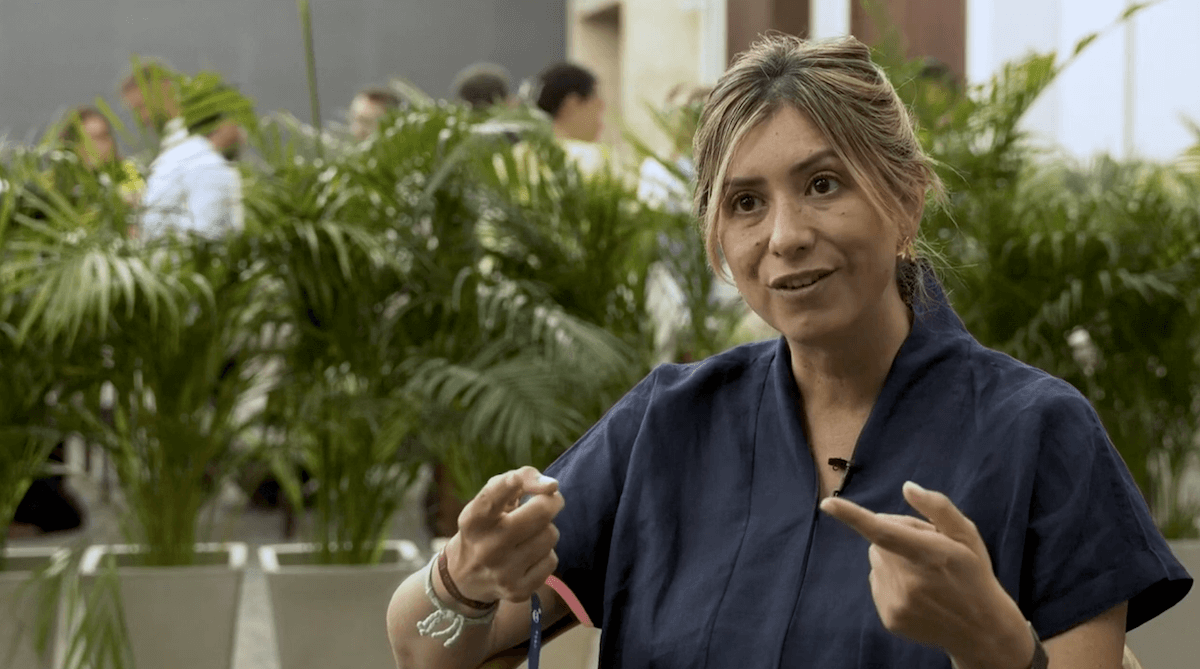Melinda Gates was in London four years ago to help launch a global campaign. The audacious 2020 goal: to reach more than half of the estimated 225 million women worldwide who want to avoid pregnancy, yet are not using modern contraceptives. “We must continue to help our partners provide affordable contraceptives at the necessary scale and bring new partners into the market to reduce prices further,” Gates said in her speech.

On her return from London, the family planning program and the in-house Program Related Investment (PRI) team at the Bill & Melinda Gates Foundation set out to help Melinda reach that goal. Together with donors from Norway, the United Kingdom, and the United States, the Gates Foundation negotiated agreements with two major pharmaceutical firms, Merck & Co. Inc., and Bayer AG, to roughly double the supply and halve the price of contraceptive implants, a popular and effective method of birth control. Such long-acting, reversible contraceptives have been in high demand among women, but in short supply in many developing countries.
The agreements include a guarantee by the Gates Foundation and other funders that NGOs and others will buy a specific (and large) quantity of the contraceptive implants, in return for a commitment by the drug companies to increase production and lower prices. With a long-term fixed-price contract, the consortium of funders has pledged to make up any shortfall in demand from buyers. Even with lower prices, higher volumes can drive bigger profits — a classic win-win for both consumers and producers.
We went to Bayer and Merck and said, ‘We have an idea on how to give more women access to implants without making you lose money. But you need to think about your business differently.’ Natalie Revelle, Gates Foundation
If the deals work, they will demonstrate the leverage of high-level, well-designed efforts that target both capital and know-how at persistent failures of supply and demand. By mitigating risks, driving down costs, and making markets more transparent, mechanisms such as volume guarantees can kickstart powerful market forces and increase access to goods and services for tens of millions or even hundreds of millions of people.
Spoiler alert: Three years into separate six-year deals with Bayer and Merck, demand for the contraceptives is even higher than originally forecast. From 4.7 million in 2012, the annual run rate approached 10 million last year. By 2020, the number of women who will have gained access to contraceptive implants will be well above the 40 million implant units originally estimated by the partnership and guaranteed by the Gates Foundation and its donor partners.
The price reductions have already saved more than $240 million for global public health donors who procure products for the benefit of those most in need in developing countries. By the end of the guarantees in 2018, total savings could top $500 million, perhaps much more in future years. Those savings can be reinvested into additional products and training for health-care workers. The results have demonstrated the high demand among women for long-acting contraceptive options, further spurring governments to step up to ensure that women have them available.
The $400 million liability for the four volume guarantees remaining on the foundation’s balance sheet represents the largest part of the Gates Foundation’s $1.5 billion mandate for PRIs, which also include more traditional debt and equity investments in startups and impact investment funds. If demand continues to be strong, there will be no call on the foundation’s guarantee. In that case, the foundation’s capital outlay to reshape global supply and demand to benefit tens of millions of the poorest women will be zero, freeing the money for other projects.
“We always want to knock on wood because we’ve got significant exposure still on these investments,” says Julie Sunderland, the founder of the foundation’s PRI team. Barring a shortfall in orders, “We’ll have saved a billion dollars that can go toward an additional billion dollars in vaccines and contraceptives for poor women and kids in these markets.”
Buying Power
The structures of the volume guarantees are instructive for a growing group of foundations and other impact investors seeking to leverage private capital for large-scale change. The agreements are particularly instructive for investors in emerging and frontier growth markets, where lower prices can be offset by high-volume sales to a rising class of consumers.
Across industries, such tools can save billions of dollars. They will be essential for hitting the deadlines on other shared global goals, such as the UN’s 2030 Sustainable Development Goals and the global climate accords reached in Paris last year. Global institutions are aiming to apply these tools to markets in energy, agriculture, education, and women’s rights, as well as health care.
In the market for childhood vaccines, for example, the Gates Foundation’s volume guarantees have helped solve the chronic shortage of supply in addition to driving down prices. Some agreements allowed procurers such as UNICEF to enter into multi-year firm purchase contracts. Others offered suppliers a guaranteed volume in return for low prices in developing countries, spurring them to add manufacturing capacity with certainty that the additional production would be sold.
A 2012 deal with Biological E. Ltd, an Indian vaccine supplier, helped the company improve yields and reduce prices for pentavalent vaccine, a five-in-one shot to prevent diphtheria, tetanus, pertussis, hepatitis B, and Haemophilus influenzae type B (Hib) by more than 30 percent. That saved GAVI, the global vaccine alliance, an estimated $130 million over five years.
Even earlier, the Clinton Foundation’s health access initiative (CHAI), led by Ira Magaziner, had used a version of the volume guarantee mechanism to drive down prices for antiretroviral drugs that reshaped global AIDS treatment. Those price reductions generated global savings of more than $600 million between 2008 and 2011.
Without intentional interventions, the virtuous circle of high volume and low price is often blocked by perceptions of risk. When real money has to be invested now to meet uncertain future demand, most companies balk. Volume guarantees remove the long-term financial risk of increasing capacity by promising producers predictable long-term sales.
The Gates Foundation is in a strong position to take on that demand-side risk because it often has a broader perspective on the overall market than the companies themselves. Not only is it working closely with all the donor governments that provide the bulk of funding for global health campaigns, it is often supporting, through grants, the agencies and on-the-ground organizations that procure and distribute some of the very purchases it is guaranteeing. That market knowledge means that the actual risks to the foundation are lower than the perceived risks to the drug companies.
“We are solving market-level failures and political failures via our balance sheet, which is then creating a more functional market for companies to sell into,” Sunderland says. A deep understanding of market dynamics lets you “do some amazing things,” she says.
Complex Markets
Melinda Gates returned from London with $2.6 billion in commitments to finance contraceptive procurement and distribution. The consortium — the UN’s Family Planning Agency, the US Agency for International Development, and the UK Department for International Development — together represent the vast bulk of donor funding for contraceptives. The goal: reach an additional 120 million women in countries with annual income below $2,500 per capita.
“Our family planning team asked, ‘Can we do something about the pricing of contraceptives?’” recalls Natalie Revelle, who leads the volume guarantee effort at the Gates Foundation.
Contraceptive implants were the obvious opportunity. Once inserted, the devices provide effective contraception for three years (with Merck’s Implanon), up to five years (with Bayer’s Jadelle), or until the woman chooses to have the implant removed. Both the Merck and Bayer methods require trained health workers for on-site counseling and the insertion and removal, but not for ongoing adherence or check-ups, making implants especially attractive in low-resource regions where women may not have regular access to health care. Over the lifespan of the product, it is by far the most cost-effective modern contraceptive method.
The implants are not without their problems and critics, which is why the London summit and the global family-planning movement stress the importance of a woman’s ability to choose from a range of contraceptive methods. All medicines and medical devices have to go through comprehensive clinical testing, evaluating benefits and risks, before they are reviewed and approved by regulatory authorities.
Despite the popularity and advantages of contraceptive implants, the product had been in chronically short supply. The procedure was not available even to women who specifically asked for it, much less to a woman who might choose it among several options. The approximately $18 per unit cost for the Implanon or Jadelle products made budgeting for contraceptive implants difficult for international aid donors and national health ministries.
Figuring out how to solve these market failures required a deep dive into the complexities and economics of the contraceptive market. The Gates Foundation PRI team spent months studying the supply side of the market to understand production costs and competitive dynamics. Magaziner, CHAI’s irascible architect of the HIV/AIDS drug strategy, spearheaded the market analysis. The report indicated that lower prices and improved procurement systems could address the existing unmet need and accelerate demand for implants by women, who were using short-acting methods such as pills or injectables.
Meanwhile, the Gates Foundation family planning team delved into the demand side, interviewing women and NGOs in the field to understand whether lowering prices would be enough to overcome the problems these women faced in obtaining contraceptives.
Price did turn out to be the biggest barrier, but it wasn’t the only one. Other factors, such as unreliable supply chains, a shortage of trained health-care providers, and lack of knowledge among women about the product inhibited access and growth. Still, the team believed that a dramatic price decrease would be the key to unlocking the market and catalyzing solutions to these other issues.
“So we went to Bayer and Merck and said, ‘We have an idea on how to give more women access to implants without making you lose money,’” says Revelle. “But you need to think about your business differently.”
New Rules
For Merck and Bayer, the failure of supply to meet the underlying demand for a product with obvious advantages was a function of the structure of the market. The technology itself was mature: the product was not significantly different from the Norplant device that has been in use for more than 30 years.
Funding from the large donor buyers in the global contraceptives market, however, had historically been unpredictable and politicized. It was difficult for the pharmaceutical companies to forecast demand accurately, and global health procurement processes often proved opaque and challenging to companies.
The volume guarantee was an elegant solution to these challenges. To give Merck and Bayer confidence in planning production, the Gates Foundation offered to guarantee that over six years the sales volume of contraceptive implants in low-income countries would be roughly double current demand. This volume commitment would be secured by $340 million in legally binding agreements by the Gates Foundation, which committed $120 million, the governments of Norway and Sweden, and the UK-based Children’s Investment Fund Foundation.
Under these agreements, if the market did not grow at the predicted rate, the Gates Foundation and its partners would be on the hook to pay for the increased production. The contracts included provisions for other organizations to take delivery of the actual contraceptives, but the financial hit to the funders would be real. The volume-guarantee contracts are so large that a call on one of them could single-handedly wipe out the reserves for the foundation’s entire PRI portfolio.
In January 2013, Bayer made the first move. It agreed to provide its Jadelle implants at $8.50 per unit, a 53 percent reduction, in return for a guarantee of orders of at least 27 million units over six years — approximately 3 to 5 million units per year. The deal called for a first-year purchase of $25.5 million worth of product.
This seemed like a reasonable goal: The top-line dollar amount was well below the $43 million that donor buyers had put up for 2.4 million units of Bayer’s product in 2012, the year before the agreement. Paradoxically, the lower price introduced a new risk: Donor buyers would need to ensure that there was enough on-the-ground demand and trained staff to actually deliver the increased number of contraceptive implants.
To take advantage of Bayer’s current production, the donor buyers effectively took everything Bayer could produce and made arrangements for warehousing in case demand did not grow as fast as production. Merck quickly followed, agreeing to cut its prices as well. In May 2013, Merck signed a six-year deal that translated into additional savings of at least $120 million for global health buyers.
The second agreement meant that the Gates Foundation was guaranteeing sales volume almost three times the global demand before the price cuts. That was far more than it would have guaranteed if it had done the two deals simultaneously. “We were sweating,” Revelle says. “I was worried about having suitcases of excess implants and walking around trying to distribute them.”
Market Dynamics
Results of the contraceptive agreements have surpassed expectations. One report estimated that the savings on Bayer’s Jadelle implant could avert more than 280,000 child and 30,000 maternal deaths and more than 20 million unintended pregnancies. According to the World Health Organization (WHO), waiting at least two or three years between pregnancies reduces infant and child mortality and benefits maternal health. In very young women, contraceptive use delays first pregnancies, which carry higher risks.
Some of the savings from lower prices have been reinvested by donors in other supply chain improvements and training. Demand has exceeded even best-case estimates: More than 10 million units were ordered in 2015, the third year of the six-year agreement. That has helped boost progress toward the overall 2020 goal, which is otherwise lagging. As of July 2015, the Gates Foundation reported that 24.4 million more women and girls were using contraception than in 2012, about 10 million fewer than had been hoped for.
The increased demand for contraceptive implants again raises the prospect of supply shortages in the next few years. The new challenge: ramping up production from today’s current capacity of about 10 million units. Manufacturing capacity increases in large jumps, so again there is investment risk that forecasts that demand will go still higher are wrong.
The obvious solution is another volume guarantee. But the Gates Foundation is reluctant to forge another agreement for fear of permanently distorting the market. Companies may come to depend on guarantees, even when normal market forces might work. That’s known as the “sale effect,” in which prices are marked up only to be discounted to levels they would likely have reached anyway.
The risk is that “suppliers now say, ‘I need a volume guarantee to do this or that,’ that they would have done before on their own,’” says Revelle. “There’s no good way to deal with this, except to say, ‘No, I don’t think you need it for what you’re doing here.’”
Instead of a volume guarantee, the foundation and other donors are providing technical assistance to help a new supplier, the Chinese company Shanghai Dahua Pharmaceuticals Co., improve its product — a low-cost version of a similar four-year contraceptive implant — and gain WHO prequalification. That will increase supply and create a more competitive market. Dahua-Sino unsuccessfully sought its own volume guarantee.
Revelle sums up the Gates Foundation’s rough guidelines for entering into volume guarantees: Have a deep understanding of the supply and demand dynamics of the industry. Know the suppliers’ business models. Understand the cost of goods and how that might change at higher volumes. Use volume guarantees to reduce uncertainty and costs. And don’t offer guarantees in perpetuity.
Halfway through the six-year deals, the market already appears to be healthier. Late last year, Merck announced it would extend its “access pricing” for the targeted low-income countries through 2023, five years beyond the expiration of the 2013 agreement. Bayer quickly followed suit with its own announcement that the price of Jadelle would be maintained at the volume guarantee price through 2023 as well.
[seperator style=”style1″]Disclosure[/seperator]
Making Markets Work for the Poor

is a collaboration between the Bill & Melinda Gates Foundation, Paul Brest of Stanford Law School, and ImpactAlpha Inc. The Gates Foundation sponsored the project to share its experiences in making program-related investments (PRIs) with others using investment tools as part of their social-impact strategies. The ImpactAlpha team interviewed dozens of stakeholders inside and outside the foundation. The Gates Foundation PRI team provided extensive access to investment memos and other documents, selected the investments for inclusion, and reviewed articles before publication.
This article originally appeared in the Stanford Social Innovation Review as part of the supplement, “Making Markets Work for the Poor.”











